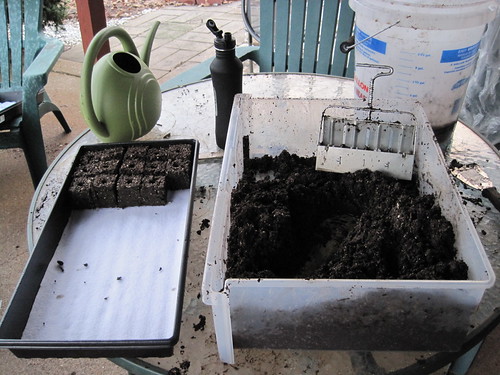We seem to have crossed some invisible line this year between gardening and homesteading. A realization that didn't even hit me until sometime in June when I saw how big all the plants were, realized we'd finally have enough tomatoes that by September I'd never want to see another one, and then saw the chickens running through the yard squawking with glee. Uhm, yeah, I think we crossed beyond gardening somewhere... and we love it! Keeping up with everything going on in the backyard is definitely a lot of hard work, but also very rewarding and deeply satisfying. In the process, however, we've started to neglect this blog and feel like we need a broader roof to include updates for all that's going on. Also, to be fair, "break into blossom" is probably a little too feminine for the postings of an equally divided homestead between Marc and I. ;)
That said, we've decided to start a new blog, but first, we need a name! The ones I lean to are a bit too cute/whimsical for him, and the ones he prefers sound too serious for me. We're attempting to find a balance between the two and a name that reflects the balance we strive for generally in our lives. We both have backgrounds in technology starting in the dot.com era, maintain day jobs, and are not likely to go "off grid" anytime soon. In fact, we learned how to do a large part of what we're doing via internet research and have been known to sit in the garden with an iPad trying to identify garden bugs. At the same time, we enjoy being outdoors digging in the dirt, constructing new projects, and the simple beauty & self-sufficiency of growing our own food.
So, to the handful of people who read our updates currently, and likely know us best, what do you think? Any good blog/homestead/farm name ideas popping into your mind? There's certainly a bunch of free produce (& future eggs) in it for you if we use your idea! :)
Meanwhile, we'll continue to post random, sporadic updates...












































